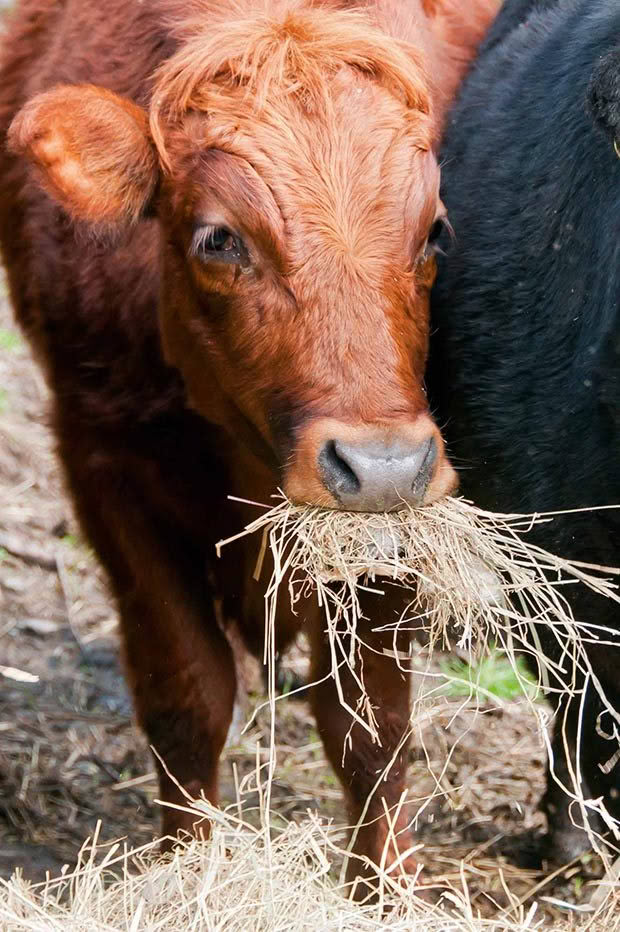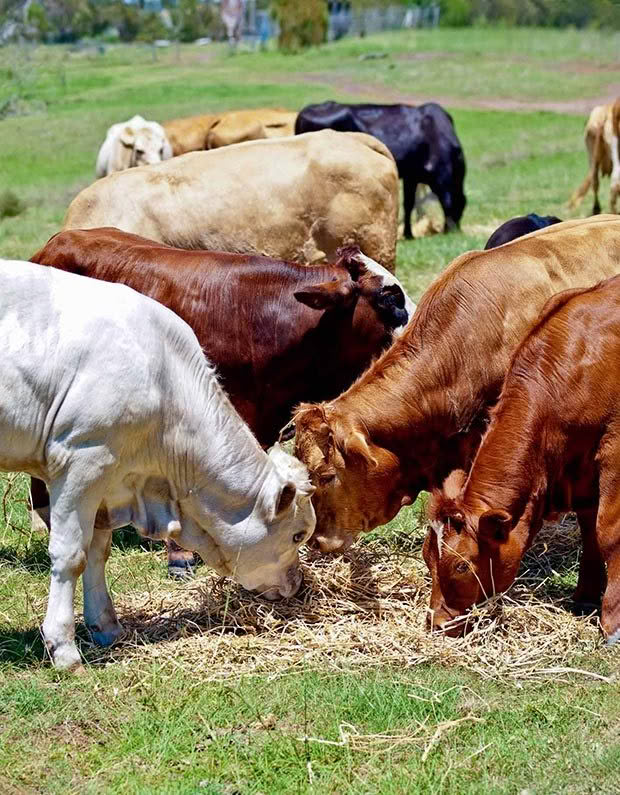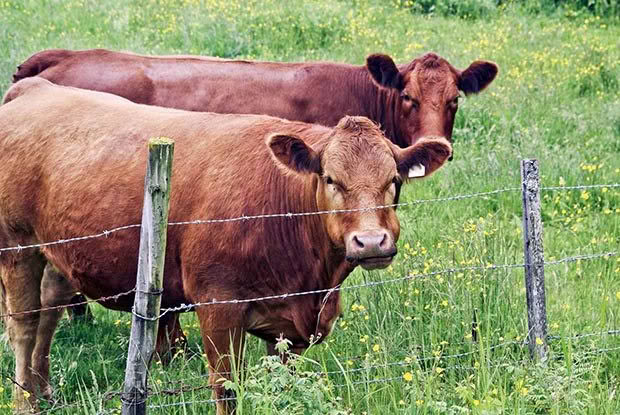Caring for cattle in autumn

Cattle on small blocks need a lot of feed going into autumn and winter. Here are some tips to keep them happy and healthy in the cooler months.
Words: Clive Dalton
Mature cows of traditional beef breeds are not a concern as they are normally in good body condition at the end of summer, but cows with dairy genes that have suckled
multiple calves may be thin and will need better management. Mature beef breed cows can do well on rough feed if they have plenty of good clean water, but dairy-type beef cows will need good feed to build up body condition. It takes 280kg of Dry Matter (DM) to replace one condition score on a cow on top of its daily maintenance requirement, so that’s a lot of feed needed each day. If you don’t have it on the farm, you’ll have to face the cost of providing it or quitting stock. The target Body Condition Score (BCS) is 5 for calving, which is a cow with rounded hip bones.
Weaned calves and rising yearlings are the main concern in autumn as it’s important to keep them growing. Stunting of growth at this stage has serious long-term effects as, contrary to popular belief, they never catch up to reach their target weights even if fed better, and will always be out of kilter with the seasons. Try to keep young stock growing at 0.5kg/head/day or better if there’s a good autumn flush of feed, but going into winter they probably won’t be able to maintain this. It’s a good idea to borrow scales to see what’s happening. Be alert to any health problems and seek urgent vet help if young stock start to scour and get thin. Fresh green pasture in autumn, although high in protein, is very low in Dry Matter so it’s a good idea to feed some hay to help digestion.
Cattle will scour on this green feed and it’s easy to panic and assume it’s worms and rush for the pour-on, but this is a mistake. Always check if worms are the problem using a Faecal Egg Count test and then get your vet to recommend the best product to use. The problem may not be worms. Keep up FE prevention and don’t be talked into stopping because spore counts drop and the nights are cooling off. Frequent rises in spore counts over the season mean animals will be highly sensitised and it takes very little to cause more liver damage. Watch for ryegrass staggers too in cattle (and horses).

Lice can be a hazard for young stock and can stop them thriving. Lice seem worse on calves in poor condition, so check on the shoulder and around the tail for them. Get vet advice to confirm how serious the problem is and the best treatment. If you send any stock to the works, ask your vet to organise some liver sample tests for minerals and trace elements. It’s important to build these up before calving. Keep cattle off vulnerable pastures (eg, newly-established ones) in wet weather. Build a stand-off area, but seek advice from your local council so it complies with regulations and is not a source of effluent escape into waterways. Tips on how to build a stand-off pad were in the June 2012 issue of NZ Lifestyle Block.
AUTUMN CATTLE TIPS

• Tidy up the herd and get rid of all stock that will not contribute to next season’s income.
• Quit all bulls that have finished their working careers.
• Pregnancy test breeding cows and get rid of empties. If you have the numbers, get rid of very late calvers too.
• If feed is short over autumn, don’t hesitate to feed out supplements to young stock which need to keep growing.
• Do a feed budget to decide if buying more supplements or quitting stock is the better option. It’s a question of which provides the lesser loss.
• If tempted to graze your road verge, be aware of the dangers and your legal responsibilities if stock cause accidents.
• Avoid pugging pastures with large cattle. Build a stand off pad for winter but check local council regulations regarding effluent.
• Facial eczema continues well into autumn so continue prevention.
• Be alert to any cows that have had FE – they may need extra help around calving due to damaged livers which put them at risk of metabolic diseases such as milk fever.
Love this story? Subscribe now!
 This article first appeared in NZ Lifestyle Block Magazine.
This article first appeared in NZ Lifestyle Block Magazine.
